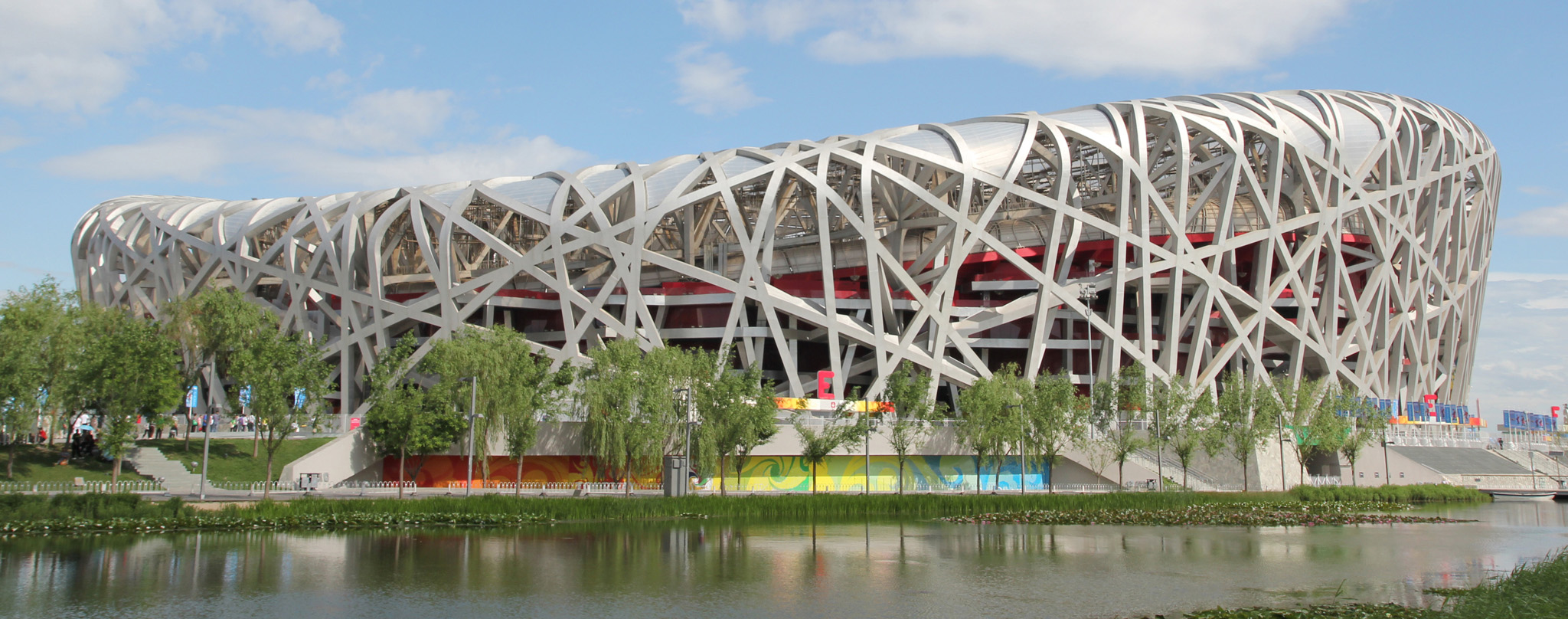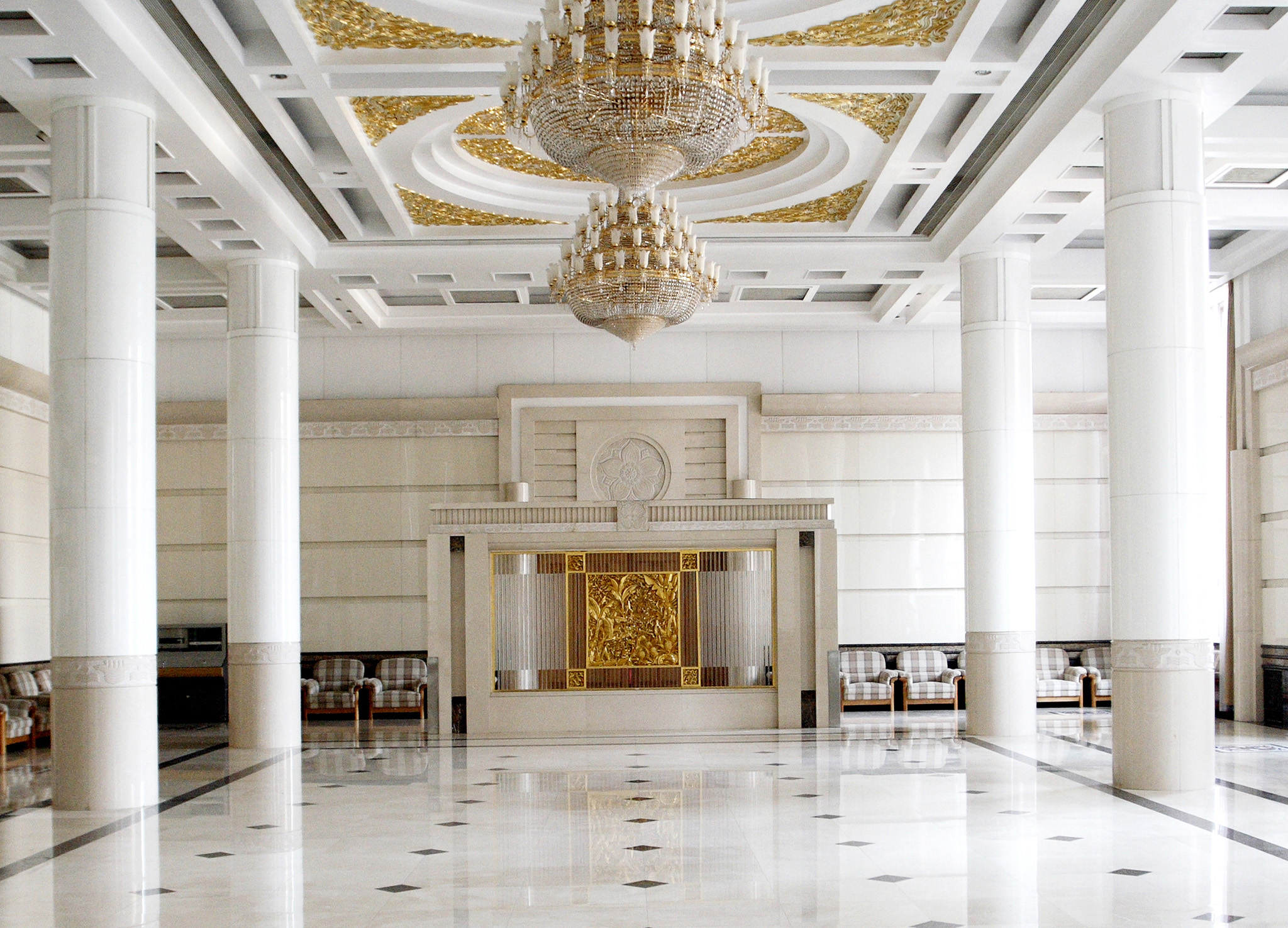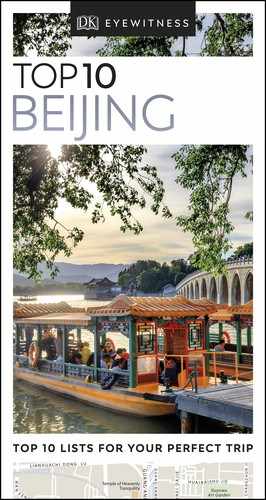THE OLYMPIC LEGACY
1. Digital Beijing Building
Designed by Beijing-based Studio Pei Zhu, Digital Beijing served as the Games’ Control and Data Center. It resembles a barcode from one side and an integrated circuit board from the other. It now accommodates a virtual museum and an exhibition center.
2. National Aquatics Center/Water Cube
Inspired by bubbles and molecules, the dramatic-looking Water Cube is a complex of five pools. After the Olympic Games, it was transformed into a giant water park with slides and a wave pool.

National Aquatics Center/Water Cube
3. National Indoor Stadium
Built to host gymnastics and handball during the 2008 Games, this stadium boasts a curving roof with slatted beams, inspired by Chinese folding fans. Post-Olympics, it stages entertainment events.
4. National Olympic Stadium (Bird’s Nest)
Designed in collaboration with the Chinese artist Ai Weiwei, the National Olympic Stadium is an architectural icon. Its outer ribbons of structural steel resemble the woven twigs of a bird’s nest as they loop and swirl over the 91,000-seat arena, hence the building’s nickname.

The iconic architecture of the National Olympic Stadium (Bird’s Nest)
5. Olympic Green
The vast Olympic Green surrounds the Olympic Village and extends beyond the fifth ring road. At its heart is a dragon-shaped lake, as well as waterfalls, meadows, and streams. Entry is free.
6. Olympic Green Convention Center
This building hosted the fencing events during the Games, as well as providing a home for the International Broadcasting Center. Its distinctive shape mirrors the traditional Chinese “flying roof” and acts as a giant rainwater collector. The building is now a multipurpose conference center.
7. Beijing Airport, Terminal 3
One of the world’s largest and most advanced airport buildings, Lord Norman Foster’s Terminal 3 welcomed international athletes to the 2008 Olympics. The design resembles a soaring dragon in red and yellow, thus evoking traditional Chinese colors and symbols.
8. National Center for the Performing Arts
French architect Paul Andreu’s silvery “Egg” (see National Center for the Performing Arts) provides a striking contrast to the monolithic Socialist architecture of neighboring Tian’an Men Square. The building is surrounded by a reflective moat and accessed by an underwater tunnel. A part of the facade is transparent, so at night passers-by can see inside.
9. LeSports Center
Rebranded since the Olympics, the host venue for the basketball games features a unique exterior design that gives the impression of movement, with boards alternately rising and falling. More than mere show, the aluminum alloy boards reflect heat and reportedly result in 60–70 per cent energy savings. The facility has a capacity to seat 18,000 people and is one of Beijing’s largest.
10. CCTV Building
The most striking addition to the Beijing skyline is the headquarters of China Central Television. Designed by Dutch architects Rem Koolhaas and Ole Scheeren, it is a gravity-defying loop that pushes the limits of architecture. Its unusual design has prompted some locals to nickname the building “Glass Pants” (trousers).

CCTV Building
TOP 10 SOCIALIST MONUMENTS
1. Great Hall of the People
Over 300 rooms built in 10 months.

Great Hall of the People
2. Agricultural Exhibition Center
In 1959, for the tenth anniversary of the People’s Republic of China, this was one of ten buildings commissioned.
3. National Museum of China
This museum is every bit as brutal and ugly as the Great Hall, which it faces across the square.
4. Beijing Railway Station
Prime illustration of 1959’s “size is everything” approach to architecture.
5. Cultural Palace of the Nationalities
The one “tenth-anniversary” building of elegance. Its plan forms the Chinese character for “mountain.”
6. Minzu Hotel
No Chinese motifs here – but it’s suitably monolithic and drab.
7. Military Museum of the Chinese People’s Revolution
Owes a striking debt to Moscow.
8. Natural History Museum
Neo-Classical Socialist Chinese – but fairly nice once you’re inside.
9. National Art Museum of China
The largest art gallery in China.
10. Beijing West Railway Station
A 1995 take on 1959-style architecture.
